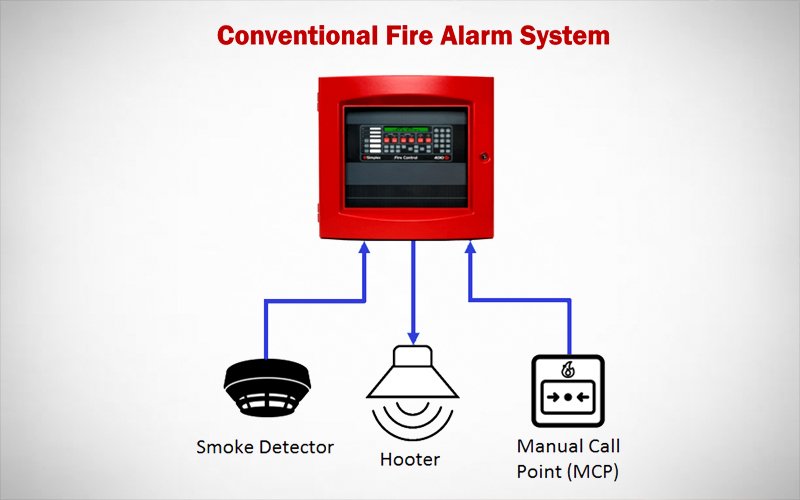
CONVENTIONAL FIRE ALARM SYSTEM
WHAT IS A CONVENTIONAL FIRE ALARM SYSTEM?
Conventional Fire Alarm panels have been around since electronics became small enough to make them possible. They are no longer used frequently in large buildings but use in smaller sites such as small schools, stores, restaurants, and apartments.
Conventional fire alarm panels are more of a standard fire protection system, and are also the most common type of fire alarm system in commercial settings.
The main drawback of conventional panels is that one cannot convey which device has activated within a circuit. The fire may be in small space, but as far as emergency responders can tell, a fire could live anywhere within site.
Where conventional fire alarm control panels can used?
A fire alarm conventional panel can have used anywhere, but they are ideal for small businesses, single story buildings, buildings with a simple layout, or smaller structures in general where just a couple of zones can cover the entire building.
How does a conventional fire alarm system work?
The conventional alarm system works increased electrical currents to notify the control panel of a change in atmosphere. Initiating devices in a particular zone set at a certain threshold and when that threshold surpassed by things like smoke or heat, the electrical current increases and sends a signal to the control panel. For example, smoke detectors identify a change in the amount of particles within the air or carbon monoxide detected by identifying an increase in the zone’s carbon monoxide levels.
False Alarm
These security systems are false alarms that concern the alarm ringing when anyone from your family members enter the restricted area. Or there are examples when the fire alarm system start itself without any reason.

ADVANTAGES OF CONVENTIONAL FIRE ALARM SYSTEMS:
- Cost-effective for small applications.
- Ease of use
- More effective maintenance
- Flexible wiring topology
Cost-effective for small applications
Addressable technology allows the usefulness of 2 wires instead of 4 wires. Also, as addressable systems wired in a spiral topology, less cabling is needed when compared with conventional systems and the result is come a time and cost decrease.
Ease of Use
Auto addressing, on-screen support and a USB interface make the FC501 even easier to be operated.
More effective maintenance
The exact location of faults, detectors’ dirtiness monitoring, location of loop faults and single point disablement facilitate the maintenance of the procedure.
Flexible wiring topology
Addressable systems suggest the choice between loop or bus topology. It provides high flexibility to the installer in wiring new systems and modifying or upgrading existing systems. Input /Output modules can have located next to the device they monitor or manage resulting in a reduction of the wiring and installation price.
Some Ideal benefits for conventional fire alarms have:
- Small Schools
- Stores
- Restaurants
- Apartments
A conventional fire alarm system uses one or more circuits, attached to sensors wired in parallel. Each appliance connects to the control panel with its wire. The main advantage of the conventional fire alarm system is cost-effective.
https://www.youtube.com/embed/cveuVXqrYq4https://www.youtube.com/embed/vouWAx-VWhghttps://www.youtube.com/embed/aMi7iXD0l9I
